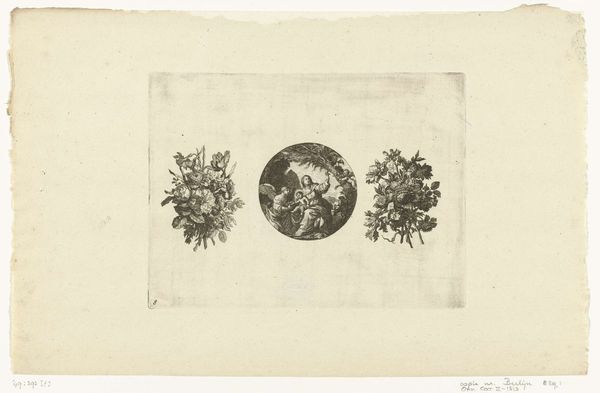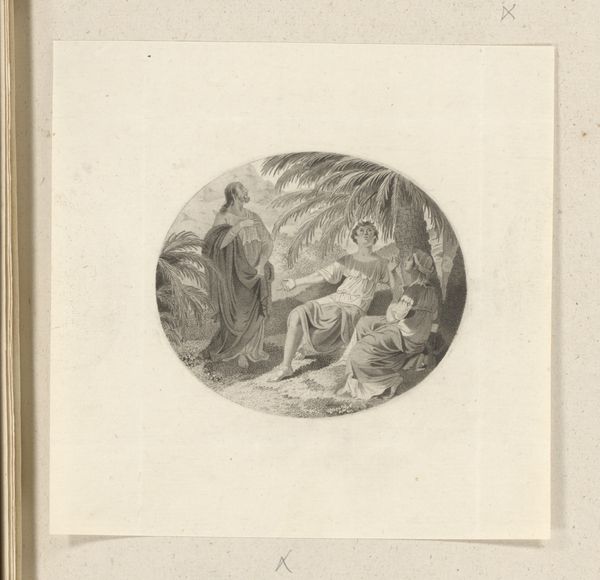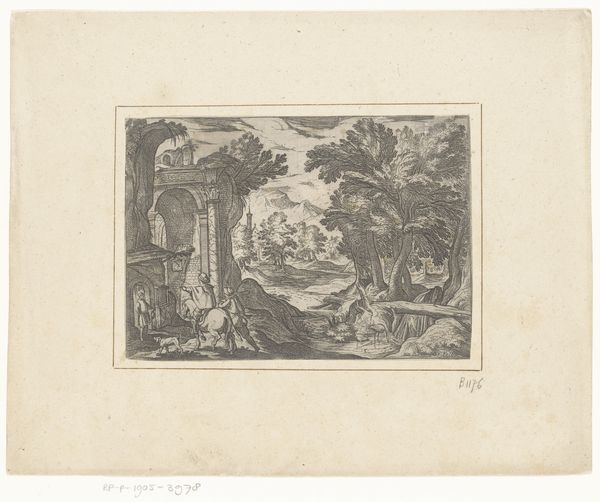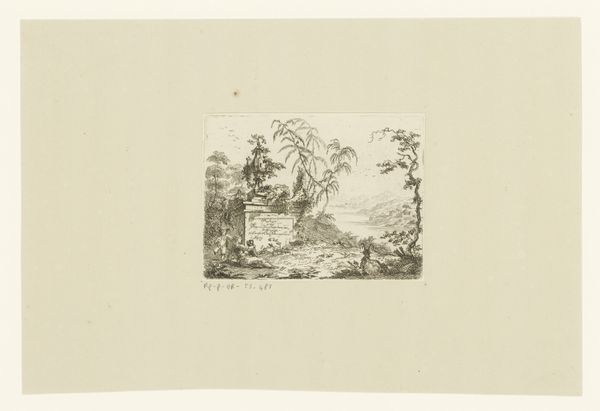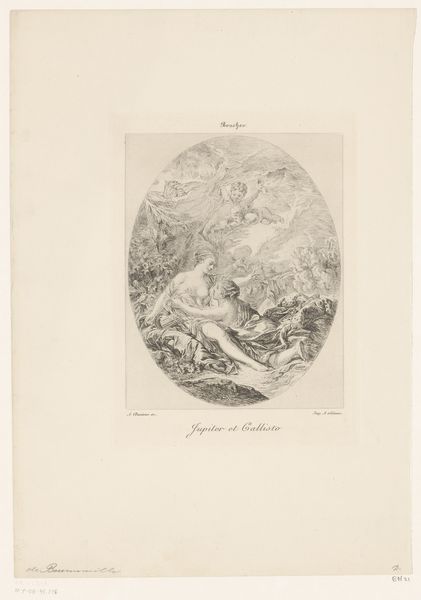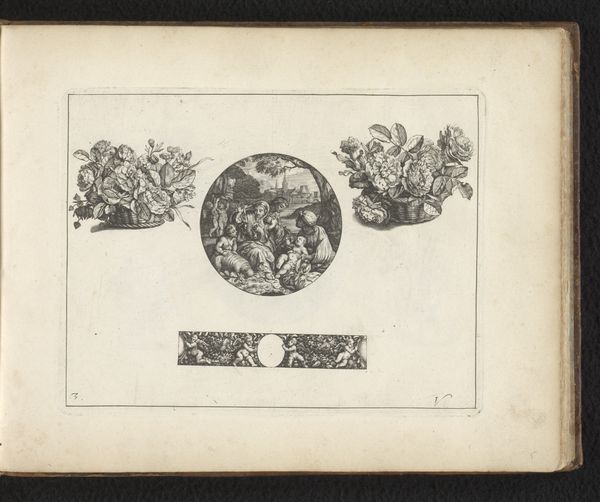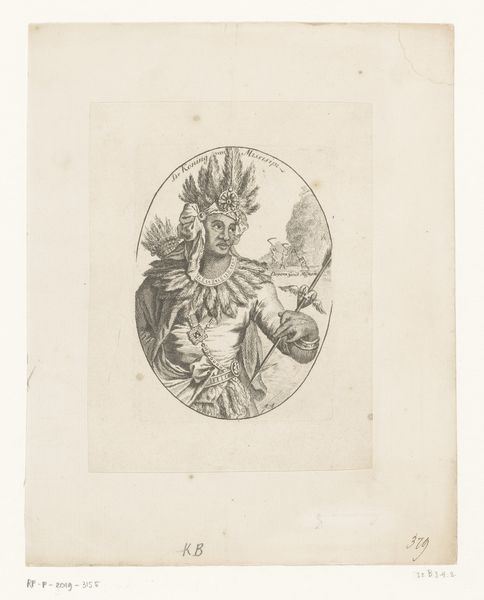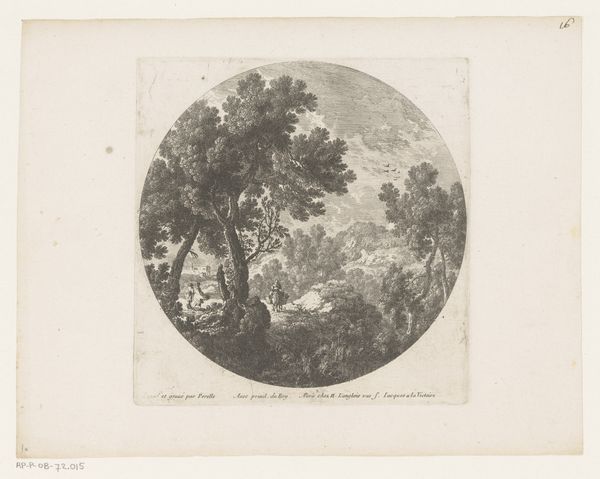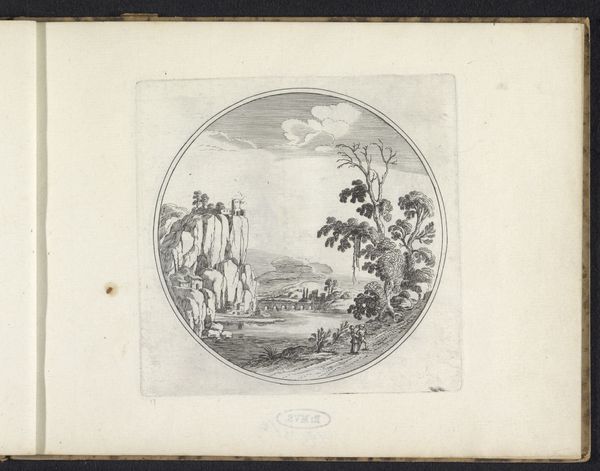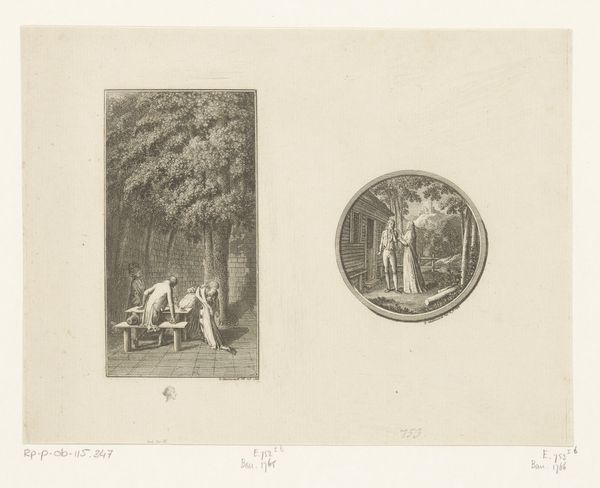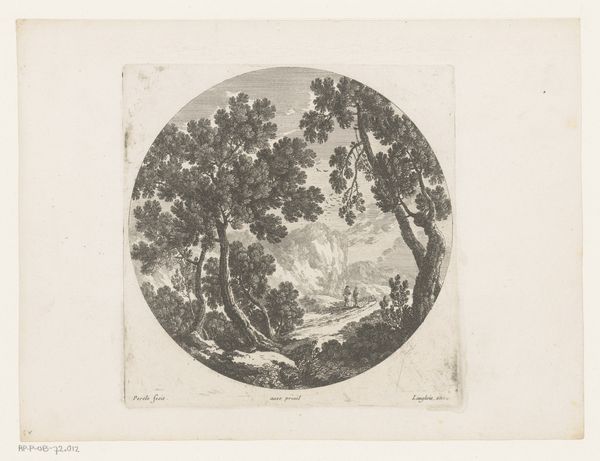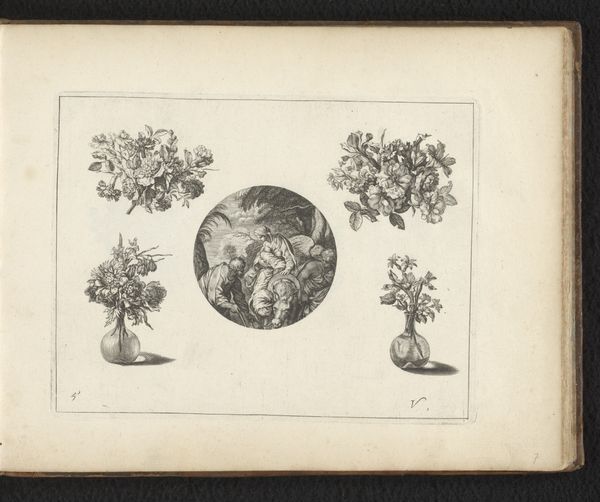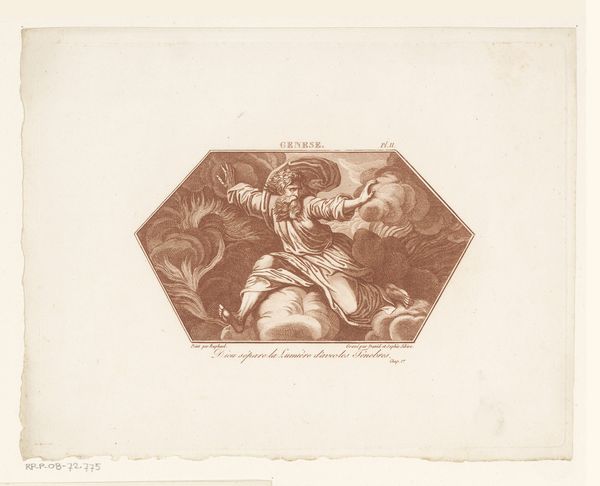
Twee voorstellingen uit Sophia Albrecht's gedichten 1781
0:00
0:00
danielnikolauschodowiecki
Rijksmuseum
Dimensions: height 162 mm, width 210 mm
Copyright: Rijks Museum: Open Domain
Curator: Here we have "Twee voorstellingen uit Sophia Albrecht's gedichten," or "Two Scenes from Sophia Albrecht's Poems," by Daniel Nikolaus Chodowiecki, created in 1781. It's currently held at the Rijksmuseum. Editor: It feels delicate, doesn't it? A study in light and shadow. I'm immediately struck by the artist's command of line work. There is an allegorical dimension. Curator: Yes, look closely at how the engraver used etching to create texture, especially in the landscape. See the cross-hatching and varied line weights that lend depth to the composition? Notice also how the composition invites an interpretation based on contrasting forms of representing an Arcadian idyll: one rectangular, the other circular. Editor: I'm curious about the relationship between Chodowiecki and Albrecht, though. I’m also intrigued by the materials used—the specific paper and ink. What choices underpinned those decisions? And, beyond that, how widely distributed were these prints? Who was able to access them? Was Chodowiecki’s process streamlined, or were there unique craft elements that informed this method of engraving? Curator: Your focus brings up a good point. While context helps in interpretation, it’s also important to study the form. The placement of the figures within each panel—note their positioning beneath the sheltering tree—contributes significantly to the meaning. The semiotic dimension should be considered when thinking about pastoral traditions within eighteenth-century Germany. The tree represents both shelter and nature itself. Editor: Sure. The sheltering tree acts as an allegorical representation of the poem’s themes, no doubt. But how did Chodowiecki source his materials, and what would an apprentice earn? By interrogating these elements we gain a more accurate sense of this era. Were the artisanal methods already being displaced at this moment of burgeoning capitalism? Curator: Your reading opens doors to economic realities surrounding its production. We may be veering away from aesthetics, however. Isn’t it valid to focus on Chodowiecki’s command of classical line? The neoclassical attention to the human figure is striking. Editor: True, there's clearly skill at play here. For me, though, understanding art demands considering its context—that broader network of production and access that you just noted. Curator: Agreed. The dialectic creates tension and reveals much more. Editor: Precisely. The print gains potency from considering materiality and context.
Comments
No comments
Be the first to comment and join the conversation on the ultimate creative platform.
